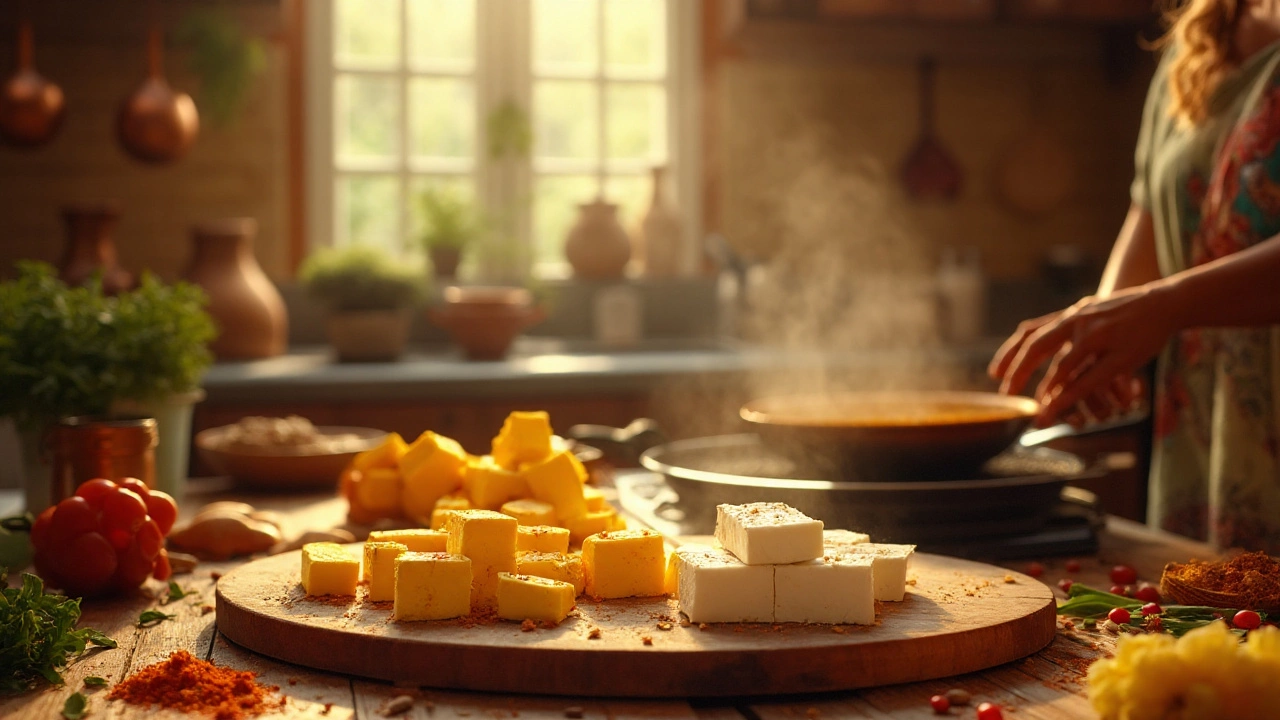Vegetarian Protein: Boost Your Meals with Indian Plant Power
When working with vegetarian protein, the protein you get from plant‑based Indian foods such as dal, lentils, and paneer. Also known as plant protein, it fuels muscles, supports immunity, and keeps you full. This page pulls together everything you need to know about getting enough protein without meat, from classic pulses to dairy‑based options. Vegetarian protein isn’t a mystery; it’s a collection of ingredients that, when combined correctly, deliver all essential amino acids. Below we’ll walk through the big players, how they work together, and why they matter for a balanced Indian kitchen.
Dal: The Everyday Protein Powerhouse
One of the most common sources is dal, split peas or lentils that form the backbone of Indian soups and stews. Dal provides roughly 7‑9 g of protein per cooked cup, plus fiber, iron, and B‑vitamins. Because dal is a legume, it contains the amino acid lysine, which most cereals lack. That makes dal a perfect partner for rice or wheat‑based breads, creating a complete protein profile. The science is simple: vegetarian protein encompasses dal, and soaking dal for 30‑60 minutes reduces antinutrients, improving digestibility and protein absorption. Our collection includes guides on soaking, cooking times, and flavor tricks that turn plain dal into a tasty, protein‑rich centerpiece.
Lentils, a close cousin of dal, deserve their own spotlight. lentils, small, round pulses that come in colors like red, green, and black pack about 9‑10 g of protein per cup when cooked. They also bring a punch of folate and magnesium. Lentils differ from other dal varieties in that they often cook faster and retain their shape, making them ideal for salads, curries, and even protein‑filled wraps. When you pair lentils with a grain such as quinoa or millets, you get a balanced amino‑acid profile, proving that lentils provide essential amino acids for vegetarian protein. The posts below explain how to avoid over‑cooking, how to season lentils without drowning their subtle flavor, and which regional recipes showcase them best.
If you need a dairy‑based protein boost, paneer, fresh Indian cottage cheese that’s high in protein and calcium fits the bill. Paneer delivers about 14 g of protein per 100 g and is completely neutral in taste, so it soaks up spices like a sponge. Unlike many cheeses, paneer doesn’t melt, making it perfect for grilling, frying, or adding to thick curries. Because it contains all nine essential amino acids, paneer acts as a “complete protein” that complements pulse‑based dishes. Combine paneer with dal or lentils, and you create a meal that hits every protein target without relying on meat. Our articles cover the best milk choices for homemade paneer, how to prevent grainy texture, and quick marinades that keep the protein juicy.
Beyond choosing the right ingredient, cooking technique matters. Soaking dal or lentils for at least half an hour (or overnight for tougher varieties) activates enzymes, cuts cooking time, and cuts down on phytates that block iron absorption. Adding a pinch of baking soda during cooking can further soften legumes, but use sparingly to avoid flavor loss. Pairing acidic ingredients like tomatoes or lemon juice at the end of cooking preserves protein structure while brightening taste. For complete protein meals, aim for a 1:1 ratio of pulses to grains; this balances lysine and methionine, the two limiting amino acids in plant foods. The articles in this list dive deep into timing (when to add garlic or ginger), how to keep roti fluffy for better nutrient pairing, and ways to make quick, protein‑rich meals for busy weekdays.
Ready to see how these ideas play out in real recipes? Below you’ll find a curated set of posts that walk you through everything from selecting the right dal, mastering lentil textures, crafting creamy paneer dishes, to quick protein‑boosting tips for everyday cooking. Whether you’re new to Indian cuisine or looking to fine‑tune your vegetarian protein game, the guides ahead give you actionable steps, clear explanations, and the confidence to build balanced, flavorful meals.

Paneer vs Tofu: Which Tastes Better?
Explore the flavor, texture, nutrition, and culinary uses of paneer and tofu to decide which one wins the taste test for your kitchen.